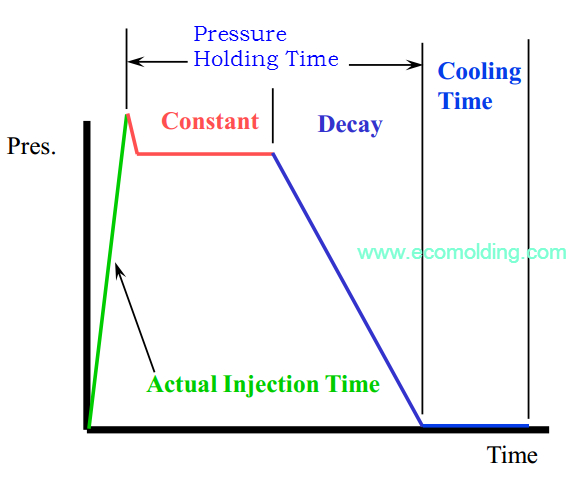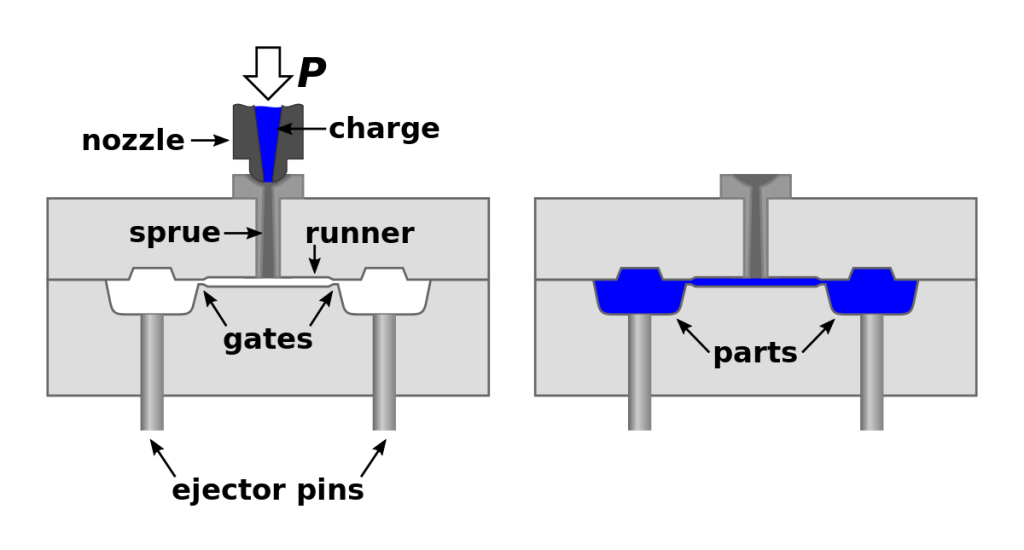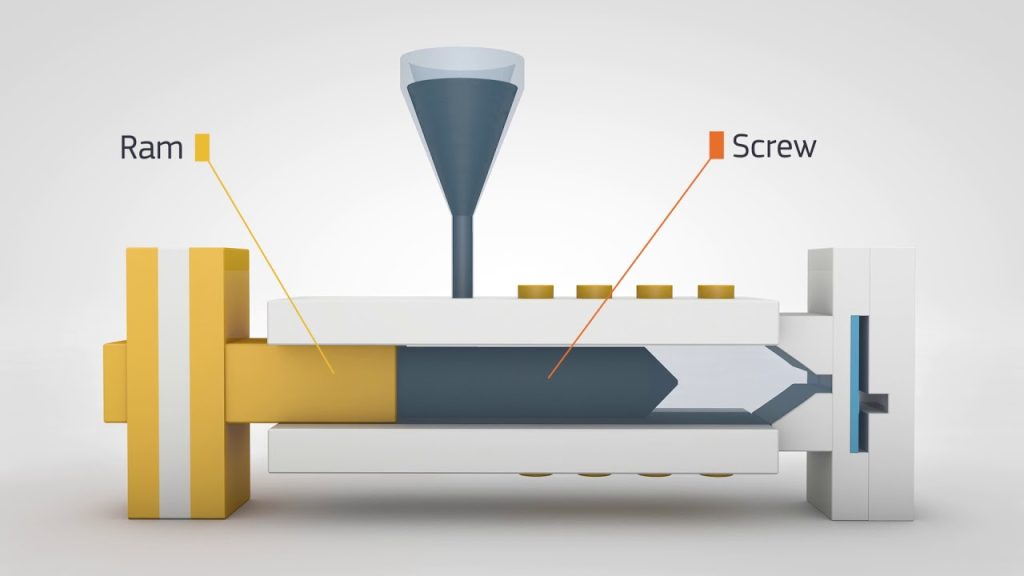Table of Contents
If you’re in the manufacturing industry, you’ve probably heard the term “hold time” thrown around in relation to injection molding. But what exactly is hold time, and why is it so important? In this article, we’ll dive into the basics of hold time and explore its crucial role in the injection molding process.
From ensuring consistent part quality to preventing defects, hold time can make or break your injection molding operation. So whether you’re a seasoned pro or just starting out, understanding hold time is essential for success in the industry. Let’s get started!
What is Hold Time in Injection Molding?
Hold time is a crucial stage in the injection molding process. It refers to the duration that the molten material is held in the mold after injection. During this time, the material is subjected to pressure to ensure that it fills all the cavities in the mold, and that it solidifies and cools properly. Hold time can affect the quality, strength, and accuracy of the final product, making it an essential consideration in injection molding.
How Hold Time Works
Hold time is the duration that the molten material spends in the mold after injection. It is the time when the material is under pressure to ensure that it fills all the cavities in the mold and solidifies evenly. The duration of hold time depends on the material being used, the size and complexity of the mold, and the desired quality and strength of the final product.
During hold time, the material is still in a plastic state and is susceptible to deformation or shrinkage. Therefore, it is essential to maintain the pressure and temperature to ensure that the material cools and solidifies uniformly. The hold time is usually longer than the injection time, and it can range from a few seconds to several minutes.
Importance of Hold Time in Injection Molding
Hold time is a critical stage in the injection molding process, and it can affect the quality, strength, and accuracy of the final product. Here are some of the reasons why hold time is essential:
1. Ensures Even Distribution
Hold time ensures that the molten material is evenly distributed throughout the mold and that there are no air pockets or voids. This is crucial in ensuring that the final product is of the desired quality and strength.
2. Improves Product Accuracy
Hold time allows the material to solidify and cool evenly, which improves the accuracy of the final product. It ensures that the product has the correct dimensions and that there is no warping or distortion.
3. Enhances Product Strength
Hold time enhances the strength of the final product by allowing the material to cool and solidify properly. It ensures that the product has no weak spots or defects that could compromise its strength.
4. Reduces Production Costs
By ensuring that the final product is of the desired quality and strength, hold time helps to reduce production costs. It minimizes the need for rework, repairs, or scrapping of defective products.
Hold Time vs. Injection Time
Hold time is different from injection time, although the two are closely related. Injection time refers to the duration that the molten material is injected into the mold. It is the time when the material is under maximum pressure and velocity, and it fills the cavities in the mold.
Hold time, on the other hand, is the duration that the material spends in the mold after injection. It is the time when the material is under lower pressure and velocity, and it solidifies and cools. Hold time is usually longer than injection time, and it can range from a few seconds to several minutes.
Factors Affecting Hold Time
Several factors can affect the hold time in injection molding. These include:
1. Material Type
Different materials have different cooling rates and shrinkage rates, which can affect the duration of hold time.
2. Mold Size and Complexity
The size and complexity of the mold can affect the duration of hold time. Larger and more complex molds may require longer hold times to ensure even distribution of the material.
3. Mold Temperature
The temperature of the mold can affect the duration of hold time. A higher mold temperature can reduce the hold time, while a lower mold temperature can increase the hold time.
4. Injection Pressure
The injection pressure can affect the duration of hold time. Higher injection pressure can reduce the hold time, while lower injection pressure can increase the hold time.
Conclusion
Hold time is a crucial stage in the injection molding process, and it affects the quality, strength, and accuracy of the final product. It ensures that the molten material is evenly distributed throughout the mold, and that there are no air pockets or voids. By allowing the material to cool and solidify properly, hold time enhances the strength of the final product and reduces production costs. Factors such as material type, mold size and complexity, mold temperature, and injection pressure can affect the duration of hold time, making it an essential consideration in injection molding.
Frequently Asked Questions
Here are some commonly asked questions about hold time in injection molding:
What is hold time in injection molding?
Hold time is the amount of time that the plastic material is held under pressure in the mold after the injection phase is complete. During the hold time, the plastic material is allowed to flow and pack out any remaining voids in the mold. This ensures that the final part is fully formed and has the desired dimensional accuracy.
The hold time is typically determined by the material being used, the thickness of the part, and the geometry of the mold. It can range from a few seconds to several minutes, depending on these factors.
Why is hold time important in injection molding?
Hold time is critical to the quality of the final part. If the hold time is too short, the plastic material may not have had enough time to fully flow and pack out the mold, resulting in incomplete parts or parts with voids. On the other hand, if the hold time is too long, it can lead to overpacking and excessive stress on the part, which can cause warpage or other defects.
By optimizing the hold time, injection molders can ensure that the parts they produce meet the required specifications for dimensional accuracy, strength, and aesthetics.
How is hold time determined in injection molding?
The hold time is typically determined through a combination of trial and error and computer simulations. Injection molders will start with a conservative hold time and gradually reduce it until they achieve the desired part quality. Computer simulations can also be used to predict the flow behavior of the plastic material and optimize the hold time before any parts are actually produced.
It’s important to note that the hold time may need to be adjusted for different materials, part geometries, and mold designs. The injection molder should have a thorough understanding of these factors and be able to adjust the hold time accordingly.
Can hold time be adjusted during the injection molding process?
Yes, hold time can be adjusted during the injection molding process. Most modern injection molding machines have the ability to adjust the hold time on-the-fly, based on feedback from sensors in the mold. This allows the injection molder to optimize the hold time for each part and make adjustments as needed.
However, it’s important to note that changing the hold time during the process can have an impact on the quality of the final part. The injection molder should have a thorough understanding of the material and process parameters and carefully monitor the part quality to ensure that any adjustments to the hold time are appropriate.
What are some common problems associated with hold time in injection molding?
Some common problems that can arise from improper hold time in injection molding include incomplete parts, parts with voids, overpacked parts, and warpage or other dimensional defects. These issues can result from a hold time that is too short, too long, or not optimized for the specific material and part geometry.
To avoid these problems, injection molders should carefully monitor the hold time and adjust it as needed to achieve the desired part quality. They should also have a thorough understanding of the material and process parameters and be able to optimize the hold time for each part and mold design.
In conclusion, hold time is a critical parameter in the injection molding process. It refers to the amount of time that the molten plastic material is held under pressure after the injection stage. This extra time allows the material to fully fill the mold cavity and solidify, resulting in a high-quality finished product.
Proper hold time is essential for achieving consistent part dimensions, avoiding defects such as sink marks, and ensuring that the plastic material is fully packed into the mold. However, it is important to note that hold time must be optimized for each specific material and part, as different materials and part designs may require different hold times.
Overall, understanding and controlling hold time is crucial for achieving high-quality, precise injection molded parts. By carefully monitoring and adjusting hold time as needed, injection molding professionals can ensure that their products meet the highest standards of quality and consistency.
Request a quote today!
[contact-form-7 id="1578" title="Contact form"]
Please compress the file into a ZIP or RAR file before uploading. Alternatively, send through your RFQ by email.
enquires@unitymanufacture.com





